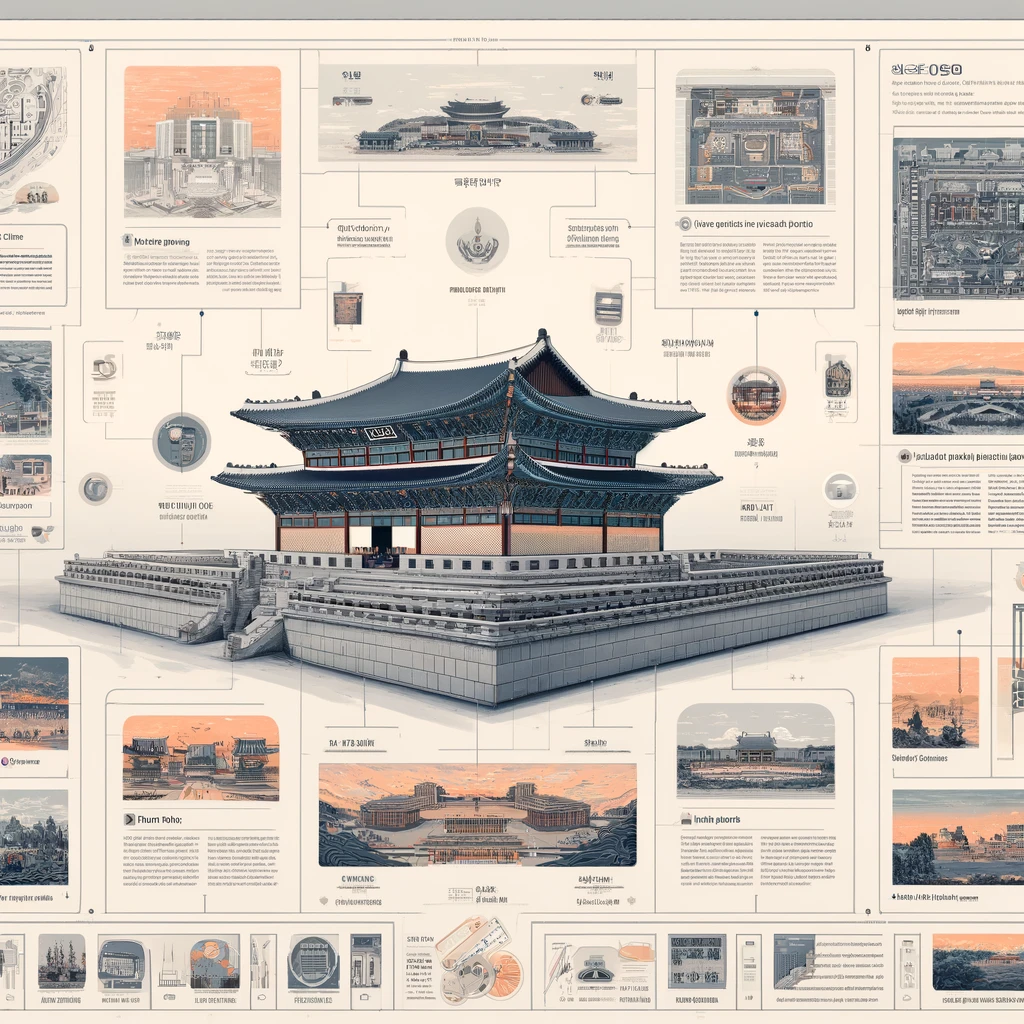목차
Exploring the Historical Significance of Gyeongbokgung Palace
Gyeongbokgung Palace, located in the heart of Seoul, South Korea, is more than just a grandiose structure; it’s a profound testament to the resilience and cultural heritage of the Korean people. Built in 1395 during the Joseon Dynasty by King Taejo, it’s the largest of the Five Grand Palaces built in Seoul. The name “Gyeongbokgung” translates to “Palace Greatly Blessed by Heaven,” underscoring its intended significance as the heart of Korean royalty and governance.

Architectural Marvel of the Joseon Dynasty
The architectural design of Gyeongbokgung Palace reflects the sophisticated aesthetic and philosophical ideas of its time, heavily influenced by Confucian principles. The layout is based on the ideals of harmony and balance, evident in the symmetry and orientation of the buildings which were designed to be in harmony with the geography of the surrounding landscape, particularly the mountains and streams.
The main gate, Gwanghwamun, serves as an iconic entry point, leading to Geunjeongjeon, the throne hall, where the king formally greeted officials and foreign dignitaries. This hall is an excellent example of Joseon Dynasty architecture, featuring intricate wooden beams and vibrant dancheong (traditional multicolored paintwork on wooden buildings).
Symbol of Sovereignty and Cultural Identity
Gyeongbokgung was not merely an administrative and residential complex but also a cultural and educational hub. It housed the National Academy and the Royal Library, which played a critical role in the intellectual nurturing of the nation. The palace was a focal point for ceremonies, state affairs, and the arts, underscoring its role as a symbol of sovereignty and Korean identity.
During the Japanese invasions of Korea in 1592-1598, the palace was destroyed and lay in ruins for almost three centuries. Its reconstruction began in 1867 under the orders of Regent Heungseon Daewongun during the reign of King Gojong, highlighting a period of cultural revival and national pride.
Modern Historical Context
The 20th century was particularly turbulent for Gyeongbokgung Palace. It suffered significant damage during the Japanese occupation of Korea (1910-1945), when many of its buildings were destroyed to diminish Korea’s historical identity. However, starting from 1990, the South Korean government initiated a comprehensive restoration project aiming to restore Gyeongbokgung to its former glory. This restoration is ongoing and is part of a broader effort to preserve and rejuvenate Korean history and culture.
The Palace as a Cultural Venue
Today, Gyeongbokgung Palace is not only a tourist attraction but also a vibrant cultural venue. Traditional ceremonies like the changing of the guard and royal guard parades are reenacted daily, offering visitors a glimpse into the regal ceremonies of the past. The palace also serves as a picturesque backdrop for various cultural festivals and events throughout the year that celebrate traditional Korean music, dance, and crafts.
Educational Impact
Educationally, the palace serves as a tangible connection to Korea’s historical past, offering numerous learning opportunities about the Joseon Dynasty’s governance, culture, and architecture. Programs are often held for both locals and tourists to immerse themselves in traditional Korean arts and crafts, such as Hanbok wearing, traditional tea ceremonies, and calligraphy workshops.
Conclusion
Gyeongbokgung Palace stands as a beacon of Korea’s enduring cultural heritage and historical pride. It is a symbol of the Korean spirit and resilience, reflecting the nation’s past adversities and triumphs. For those who visit, it offers a profound insight into the cultural and historical narratives that have shaped Korea, making it an essential destination for anyone looking to understand the depth and breadth of Korean history.
Go Blog Home
